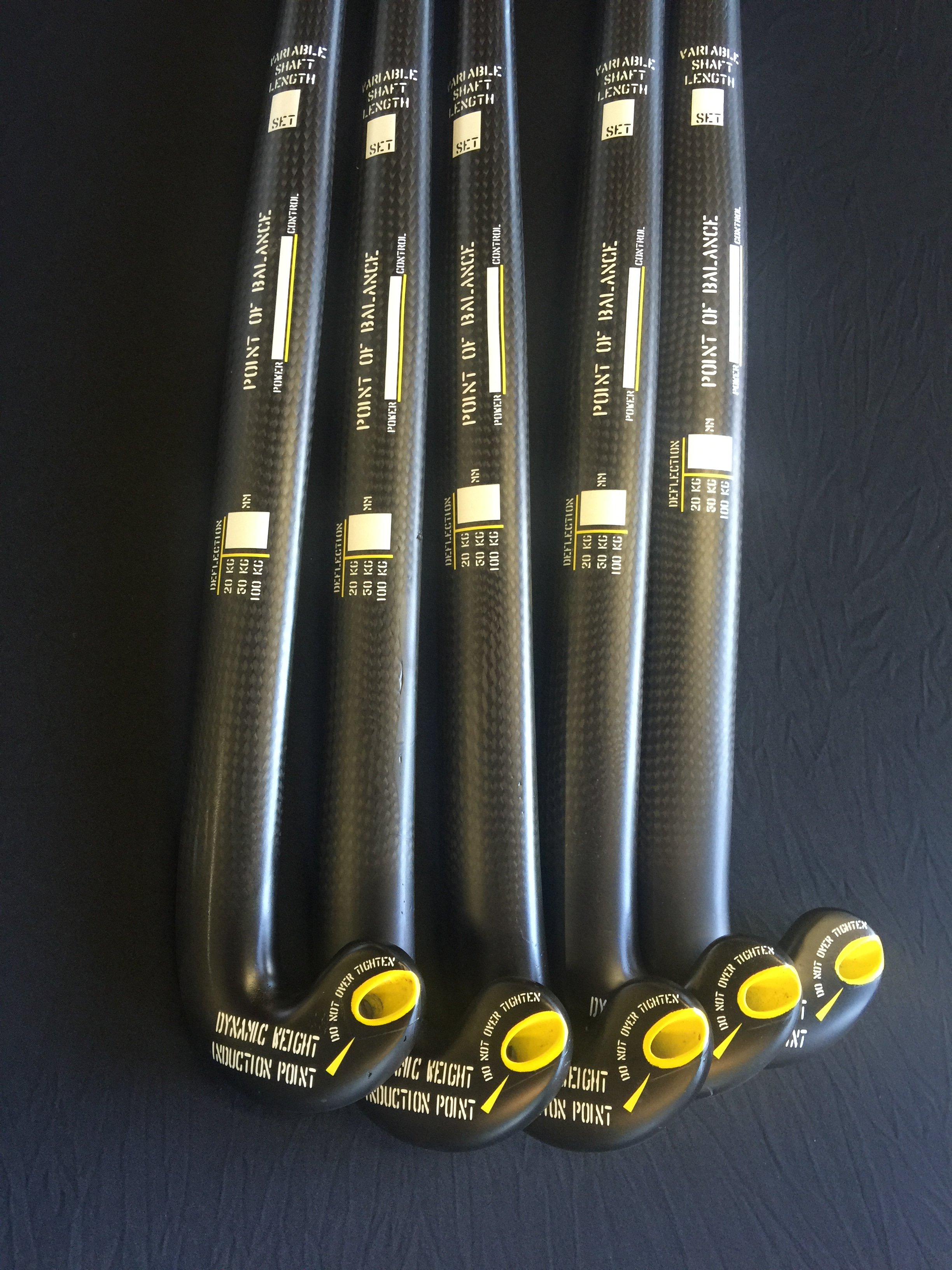 Geoff Germon is a carbon fiber evangelist. He wants designers of everyday consumer products to add the high-performance material to their repertoire – but he also is acutely aware of the challenges. They include a circular set of factors -- a lack of knowledge that hinders adoption, which in turn keeps volumes low and costs high. But he remains optimistic and continues to fight to change the status quo.
Geoff Germon is a carbon fiber evangelist. He wants designers of everyday consumer products to add the high-performance material to their repertoire – but he also is acutely aware of the challenges. They include a circular set of factors -- a lack of knowledge that hinders adoption, which in turn keeps volumes low and costs high. But he remains optimistic and continues to fight to change the status quo.
Based in Australia, Germon knows the score well. He founded Talon Technology Pty. Ltd. in 1986 to exploit the opportunities in advanced composite materials, and has been a critical observer of that industry for the last 30 years. He also serves as an adjunct professor in design at the University of Canberra, with the aim of helping the university develop expertise in the design and fabrication of carbon fiber (CF) consumer products.
Specializing in the design and manufacture of such products, Germon was responsible for creating the world’s first carbon fiber field-hockey stick, volume-produced carbon çafé chair, and a raft of other specialized products. With extensive experience working all over Asia, he currently is setting up a joint research and development operation for one of the largest consumers of carbon fiber in China.
Germon brought his cause recently to Providence, R.I., where he spoke at the inaugural Design in Plastics conference (www.4spe.org/designinplastics), organized by the Society of Plastics Engineers at the Rhode Island School of Design.
“Our problem,” Germon told attendees, “is that we have composite engineers who are standing on the other side of the room, waiting for the product to come to them. And they believe that if they have some relatively innovative process or idea, that the market will just flow to them automatically. What they don’t realize is that most consumer products – different from engineering products, I’m not talking military, defense or aerospace – start life being gated by industrial design.
“So industrial designers are the first people to look at the materials options and most of them like the concept of carbon fiber. But if you’re a professional industrial designer, you have to deliver.”
So while designers initially tend to like the possibilities offered by carbon fiber, he said they often end up having second thoughts. They wonder if they can really deliver, since they are not all that familiar with the material or the process, and often don’t really know anyone they can turn for help, or who could manufacture it in volume. So they end up suggesting sticking with better-known, alternative materials such as aluminum instead.
“And so,” Germon lamented, “we have a whole industry that’s been waiting for consumer products now for 20 years – and it’s never come.”
He took the opportunity in Providence to provide a brief primer, or Carbon Fiber 101, as he called it. Carbon fiber is produced by converting a carbon-containing polymer precursor fiber to pure carbon fiber through a carefully controlled series of heating and stretching steps. In current commercial practice, the precursor – polyacrylonitrile, or PAN – is chemically modified and optimized to maximize the mechanical properties of the end product. The high cost of specialty precursor materials and the energy- and capital-intensive nature of the conversion process are the principal contributors to the high cost of the end product.
Different materials can be used for the matrix, though epoxy is most common, and certain thermoplastics are also emerging as options.
One can use a wet laminate, or resin transfer molding (RTM) process, but the preferred process often involves using a prepreg. Where desired in the mold, one lays down the black, sticky prepreg tape (which already includes the resin), and then cook it. The prepreg melts, and the remaining material gets very hard. It’s really that simple, he suggests.
“The issue with designing with this stuff,” he acknowledged, “is that you have so many variations on a theme, that it’s a head-spinner to actually get something that works.”
But he and others have proven that many things can work. Germon showed various examples during his talk, including the wall-mounted, vessel bathtub designed by Splinterworks of (ironically) Bath, England. “I like the drapability, the sort of frozen fabric” effect of the material, he noted.
His firm created a stacking chair that went into production 20 years ago. “It was years ahead of its time,” he suggests. There also are carbon/aluminum hybrids, and a carbon Kevlar (aramid fiber) hinge unit, which creates a “soft curve” and can rotate 360 degrees. Talon Technology also has produced various sporting goods.
He offered some simple rules for carbon design:
- Inexpensive, stiff and light -- you can have any two of those properties at once, but not all three.
- If a fiber is not doing anything, get rid of it.
- Design for carbon fiber – don’t render metal parts with Adobe Carbonfibre surface effect.
- Complexity is your friend, build in as much as you can.
The cost of carbon fiber continues to hinder its acceptance for wider usage. Why do 300 grams of PAN cost $25, he asked out loud. “Because only four companies make the precursor,” he explained – and those firms are all catering to the existing demand for CF among aerospace and defence customers. The limited vendor base works to ensure that raw material costs remain high, Germon suggested. High cost has been the single largest roadblock to widespread use of carbon fiber as a strong, stiff reinforcement for advanced composites.
But, fortunately, he noted, there are forces afoot trying to change that, referring specifically to Tennessee’s Knoxville-area Oak Ridge National Laboratory, which is part of the U.S. Department of Energy.
Acrylic fiber of similar chemistry is produced on a commodity basis for clothing and carpets – a high-volume product that costs roughly half as much as the specialty PAN used in the carbon fiber industry. ORNL researchers believed textile-grade PAN was a pathway to lower-cost carbon fiber, but laboratory-scale experiments couldn’t fully explore its potential at a production scale. That led Oak Ridge to open a semi-production-scale conversion plant in March 2013. This 42,000-square-foot Carbon Fiber Technology Facility uses a 390-foot-long processing line, and builds on more than a decade of research in the area.
Researchers there have demonstrated a production method they estimate will reduce the cost of carbon fiber by 50 percent or more, and the energy used in its production by more than 60 percent. And this past spring, ORNL made the new method available for licensing. From mid-March to mid-May, the group accepted applications from firms seeking to license the technology, and said it would likely grant from three to five such licenses.
Mike Paulus, ORNL’s director of technology transfer, said in a July 11 telephone interview that negotiations with several of the selected candidates are “well under way.” He expects those discussions may be completed by the end of September, and It then will be at the discretion of each licensee whether or not they go public with word of their involvement.
ORNL said its new, lower-cost method promises to accelerate adoption of carbon fiber composites in high-volume industrial applications, including in automobiles, wind turbines, compressed gas storage and building infrastructure. Paulus added that “there are a number of other places where this could go – anywhere you need strong, lightweight, relatively inexpensive material.”
He explained that the license application process was open to firms around the world, but the caveat was that the carbon fiber to be sold in the United States has to be manufactured in the U.S., and “we built in a preference for companies that would manufacture in the United States for export. Our goal here is to stimulate growth of low-cost carbon fiber industry in the United States, and keep those jobs here.”
“Welcome to the game changer,” Germon said. “That breaks the monopoly of the current suppliers.” But now it’s more important than ever that designers learn how create products using carbon fiber. Otherwise, the licensees are “going to go broke unless someone comes along with the applications to suck up this new production.”
The future of low-cost carbon depends on expanded applications, which in turn depend on industrial designers understanding what the material can do. The best place for designers to become exposed to carbon is at university, he suggests, and yet he said he is not aware of a single design school that effectively teaches carbon fiber product design.
In a modest way, Germon is trying to do his part. “At the University of Canberra, one of the things I’ve done there is that we start the kids off in industrial design doing carbon fiber parts.”
He wants all designers to make an effort to learn more about carbon fiber as material and as a process. The payoff, he suggests, can be innovative, creative product designs that offer eye-popping aesthetics and incredibly high performance.
The views, opinions and technical analyses presented here are those of the author or advertiser, and are not necessarily those of ULProspector.com or UL Solutions. The appearance of this content in the UL Prospector Knowledge Center does not constitute an endorsement by UL Solutions or its affiliates.
All content is subject to copyright and may not be reproduced without prior authorization from UL Solutions or the content author.
The content has been made available for informational and educational purposes only. While the editors of this site may verify the accuracy of its content from time to time, we assume no responsibility for errors made by the author, editorial staff or any other contributor.
UL Solutions does not make any representations or warranties with respect to the accuracy, applicability, fitness or completeness of the content. UL Solutions does not warrant the performance, effectiveness or applicability of sites listed or linked to in any content.








Geoff made some very good points at RISD, and they are worthy of passing along to other designers and engineers.
We share a common goal:
Good composites design comes from a sound understanding of what these materials can do (and cannot), along with having the appropriate tools to get the job done correctly and efficiently. If you don’t know ESAComp, please take a look at our website (www.esacomp.com)
very interesting subject
How can I contact Geoff Germon
Hi Ayman,
Thanks for your comment and question. Unfortunately we don’t have access to Geoff’s contact information – you might try connecting through his company’s website: https://www.merlingear.com.
Good luck!
Angie
Content Manager, Prospector Knowledge Center
Thank You Angie
Good Luck